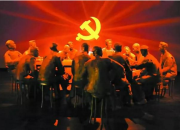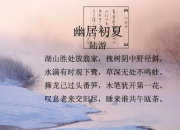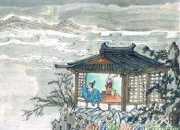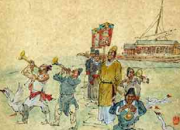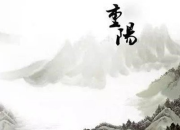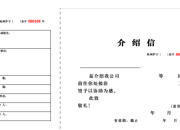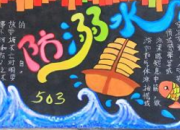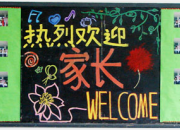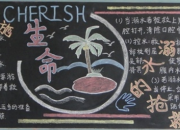关于电影的英语演讲稿
时间:2021-08-31There are so many movies I've loved that the entire list would be nearly book-length. It's tough to pick just a few, but I'll give it a try.
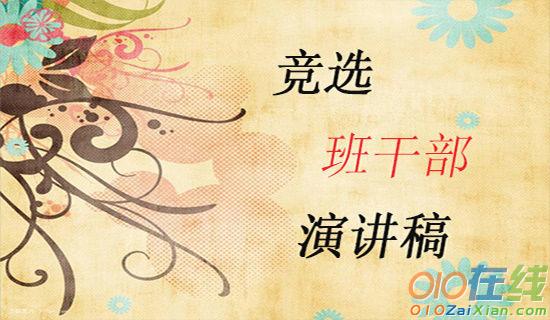
Before I start any kind of numbered list, I have to include one film that ... well, it'd be unfair to call it (them, really) my favorite film(s), as they float in the stratosphere above anything like a numerical favorites list. It isn't fair to list it with others. While I'll still refer to #1 on the list below as my favorite as follow.
Movie:d'Amélie Poulain, Directed by :Jean-Pierre Jeunet.
Jean-Pierre Jeunet has created montages of insignificance and triviality only to bring out in an euphemistic way the biggest support one can get in life;love.Every single character,including Amelie herself,has some kind of peculiarity in their characteristics(which often resemble the eccentricity of Dickensian characters)but the one thing binds them together is their agony of being lonely,unnoticed and search for companionship and appreciation.Amelie is like the angel who repairs the missing links in their lives and finds a root of her own.The "All's Well that Ends Well" motto of fairy-tales has been adopted very skilfully in this movie and it rather wakes up the fairy godmother in each of us.
For 20 years Jean-Pierre Jeunet collected small astonishing and intriguing moments in his life, taking notes in his diary, not knowing that he was up to co-write and direct one of the most successful film in French film history. Jean-Pierre Jeunet fell in love with the story and the film he titled Le fabuleux destin d'Amélie Poulain. But it's popularity was even a surprise to Jean-Pierre Jeunet himself as he once stated: I guess I have to produce a film like Alien Resurrection (USA 1997) to make a movie like Le fabuleux destin d'Amélie Poulain', obviously not aware of the films potential. Unfortunately the film didn't win an Academy Award for the best foreign film in 20xx which still puzzles film fans all over the world.
I consider Jean-Pierre Jeunet's film as a masterpiece. In my opinion, it is an outstanding film in film history for its cinematography, the music, the story, but above all the overall atmosphere. Going to the cinema is like meditating. We sit for over one-hour and comfortable chair - our breath slows down and as the lights are switched off, we enter a dream world. We seek to escape our normal world just for a short period of time, to experience something totally different and yet, we want to find ourselves in this world. Thanks to Jean-Pierre Jeunet I had a wonderful dream, I will never forget.
Jean-Pierre Jeunet and his camera man, Bruno Delbonnel, wanted to make the film look like the Spanish painter did his artwork. To establish a dreamlike atmosphere they used mostly red and green, sometimes adding a little blue spot in the picture to set the contrast. Audrey Tautou (Amélie Poulain), mostly wears either red or green dresses, as well as the housekeeper (Yolande Moreau as Madelaine Wallace, concierge), and Amélie's mother (Lorella Cravotta as Amandine Poulin) in the beginning of the film. When Amélie Poulain sits down to watch the tragedy of her life on her TV, there is an outstanding of a blue lamp in the background. Sometimes the use of color gets very obvious. Amélie's apartment for example is almost completely red, the underground station and the train station are kept in green and the green grocery store stands out from the grey buildings. Honestly, I haven't noticed the extreme use of color the first time I watched the movie. I just wondered how Jeunet succeeded in establishing such a fabulous atmosphere.
The atmosphere is also supported by the magnificent music by Yann Tiersen who has composed 19 songs in 15 days for this movie. The principal motive appears in many variations somehow being joyful, yet at the same time sad - slow and sometimes fast and activating. The music supports every moment in the film and becomes the sound of a fabulous world.
Camera movement certainly contributes its part to the atmosphere. Balanced and unbalanced pictures contribute to the message of each shot. Right in the beginning when Amélie's mother is introduced, the picture is balanced symbolizing her pursuit for correctness and cleanliness. The same can be about the first shots of Amélie's father. When talking about his dislikes, the shots are unbalanced. But more impressing are some camera movements. For example there is an astonishing high angle shot of Amélie flipping stones on le canal in Paris. The camera shows her leaning on a fence, flying above her head then craning to a low angle shot to show her flipping stones in the direction of the camera. Another one worth mentioning might be the chase of the repairs person. Nino is shown falling up the steps chasing the repairs person for the photo machines. The camera turns to show the man getting in the car driving off. Still in a low angle Nino starts his moped, trying to follow the worker, almost hitting a car. Amélie is entering the picture running after Nino. The camera follows her, then turning almost 180° around her to show her hold Nino's red bag that he lost. When Amélie sits in front of the station, we see her in a long shot, the camera dollies in to fly over her head to an over-the-shoulder shot. Some of these camera movements are really awesome, not only from a technical point of view, but moreover from an aesthetic standpoint. They support the dreamlike atmosphere, adding interesting aspects to ordinary actions. There are so many movies I've loved that the entire list would be nearly book-length. It's tough to pick just a few, but I'll give it a try.

Before I start any kind of numbered list, I have to include one film that ... well, it'd be unfair to call it (them, really) my favorite film(s), as they float in the stratosphere above anything like a numerical favorites list. It isn't fair to list it with others. While I'll still refer to #1 on the list below as my favorite as follow.
Movie:d'Amélie Poulain, Directed by :Jean-Pierre Jeunet.
Jean-Pierre Jeunet has created montages of insignificance and triviality only to bring out in an euphemistic way the biggest support one can get in life;love.Every single character,including Amelie herself,has some kind of peculiarity in their characteristics(which often resemble the eccentricity of Dickensian characters)but the one thing binds them together is their agony of being lonely,unnoticed and search for companionship and appreciation.Amelie is like the angel who repairs the missing links in their lives and finds a root of her own.The "All's Well that Ends Well" motto of fairy-tales has been adopted very skilfully in this movie and it rather wakes up the fairy godmother in each of us.
For 20 years Jean-Pierre Jeunet collected small astonishing and intriguing moments in his life, taking notes in his diary, not knowing that he was up to co-write and direct one of the most successful film in French film history. Jean-Pierre Jeunet fell in love with the story and the film he titled Le fabuleux destin d'Amélie Poulain. But it's popularity was even a surprise to Jean-Pierre Jeunet himself as he once stated: I guess I have to produce a film like Alien Resurrection (USA 1997) to make a movie like Le fabuleux destin d'Amélie Poulain', obviously not aware of the films potential. Unfortunately the film didn't win an Academy Award for the best foreign film in 20xx which still puzzles film fans all over the world.
I consider Jean-Pierre Jeunet's film as a masterpiece. In my opinion, it is an outstanding film in film history for its cinematography, the music, the story, but above all the overall atmosphere. Going to the cinema is like meditating. We sit for over one-hour and comfortable chair - our breath slows down and as the lights are switched off, we enter a dream world. We seek to escape our normal world just for a short period of time, to experience something totally different and yet, we want to find ourselves in this world. Thanks to Jean-Pierre Jeunet I had a wonderful dream, I will never forget.
Jean-Pierre Jeunet and his camera man, Bruno Delbonnel, wanted to make the film look like the Spanish painter did his artwork. To establish a dreamlike atmosphere they used mostly red and green, sometimes adding a little blue spot in the picture to set the contrast. Audrey Tautou (Amélie Poulain), mostly wears either red or green dresses, as well as the housekeeper (Yolande Moreau as Madelaine Wallace, concierge), and Amélie's mother (Lorella Cravotta as Amandine Poulin) in the beginning of the film. When Amélie Poulain sits down to watch the tragedy of her life on her TV, there is an outstanding of a blue lamp in the background. Sometimes the use of color gets very obvious. Amélie's apartment for example is almost completely red, the underground station and the train station are kept in green and the green grocery store stands out from the grey buildings. Honestly, I haven't noticed the extreme use of color the first time I watched the movie. I just wondered how Jeunet succeeded in establishing such a fabulous atmosphere.
The atmosphere is also supported by the magnificent music by Yann Tiersen who has composed 19 songs in 15 days for this movie. The principal motive appears in many variations somehow being joyful, yet at the same time sad - slow and sometimes fast and activating. The music supports every moment in the film and becomes the sound of a fabulous world.
Camera movement certainly contributes its part to the atmosphere. Balanced and unbalanced pictures contribute to the message of each shot. Right in the beginning when Amélie's mother is introduced, the picture is balanced symbolizing her pursuit for correctness and cleanliness. The same can be about the first shots of Amélie's father. When talking about his dislikes, the shots are unbalanced. But more impressing are some camera movements. For example there is an astonishing high angle shot of Amélie flipping stones on le canal in Paris. The camera shows her leaning on a fence, flying above her head then craning to a low angle shot to show her flipping stones in the direction of the camera. Another one worth mentioning might be the chase of the repairs person. Nino is shown falling up the steps chasing the repairs person for the photo machines. The camera turns to show the man getting in the car driving off. Still in a low angle Nino starts his moped, trying to follow the worker, almost hitting a car. Amélie is entering the picture running after Nino. The camera follows her, then turning almost 180° around her to show her hold Nino's red bag that he lost. When Amélie sits in front of the station, we see her in a long shot, the camera dollies in to fly over her head to an over-the-shoulder shot. Some of these camera movements are really awesome, not only from a technical point of view, but moreover from an aesthetic standpoint. They support the dreamlike atmosphere, adding interesting aspects to ordinary actions.
【关于电影的英语演讲稿】相关文章:
